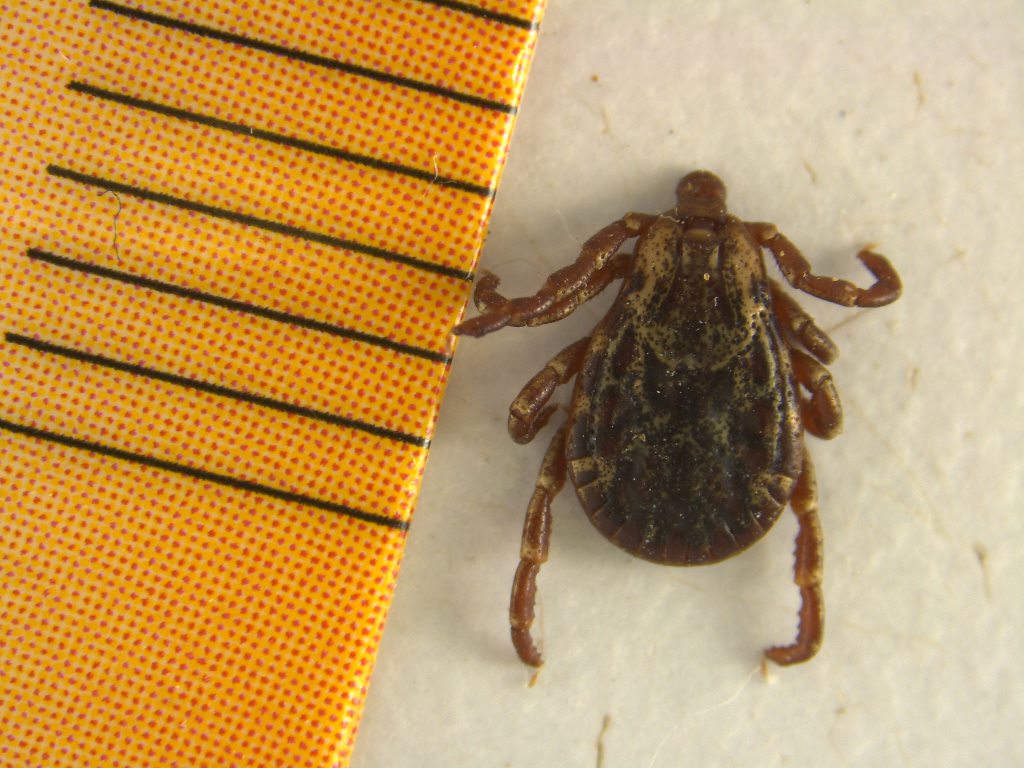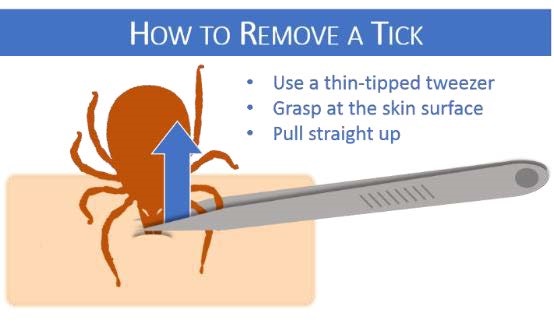It's Tick Season
The common ticks in Montana this time of the year are the Rocky Mountain wood tick, Dermacentor andersoni, and the American dog tick, Dermacentor variabilis. Ticks can be transported into the home from pets and humans. The two species look very similar. The two species of black-legged ticks (also known as deer ticks, Ixodes scapularis and I. pacificus) that vector Lyme disease have not become established in Montana although they are occasionally brought into the state by travelers (both humans and pets).

The Rocky Mountain wood tick is found on livestock, companion animals, and humans in the spring and summer in Montana. It likes stream corridors, grassy meadows, and south-facing sagebrush slopes. It can transmit viral Colorado tick fever (CTF), Rocky Mountain spotted fever (RMSF), bovine anaplasmosis, and tularemia. The American dog tick is found in eastern Montana. It is one of the major vectors of RMSF and can also transmit tularemia. Neither the Rocky Mountain wood tick nor the American dog tick transmit Lyme disease.
Rocky Mountain spotted fever transmission is rare in Montana; most cases occur in the southern Atlantic Region. The tick must remain attached for at least 10 hours before transmission of RMSF can occur. In many cases, a blotchy red rash will appear on the extremities, often starting with the wrists, palms, and soles of the feet.
Colorado tick fever occurs only in western states. In Montana, cases have been diagnosed west of the Continental Divide-southwest and south-central Montana. Symptoms of CTF occur within four days and include chills, headache, fever, muscular aches, and general malaise.
There have been no Montana-acquired cases of Lyme disease at the time this was written, and it is unlikely this will change in the foreseeable future. Questions about Lyme or other tick-borne diseases should be referred to a competent physician.
Prevention:
Use a repellent like DEET or picaridin especially on pants and socks when in ticky areas and check for ticks after being outdoors. If in a brush-type area or an area with tall grasses, always do your tick checks right afterwards.
Removing a tick from your skin:
You want to find and remove ticks as soon as possible. There are some common folklore tick removal methods such as “backing out of the tick with a burning match” that should not be attempted. This method is not safe and doesn’t work. It is important to try to thoroughly remove the tick and the mouthparts. The tick has mouthparts which are barbed and used for insertion into the skin. If these break of, it can be a further source of irritation and possibly infection. Also, the crushing of the mouthparts can allow for disease transmission to occur through the skin if not removed properly.

Place forceps (try to use blunt curved forceps or tweezers) around the tick mouthparts as close to the skin as possible. Remove the tick with a slow, steady pull away from the skin. Don’t jerk or twist the tick. Avoid getting or crushing any tick parts on you. Disinfect your skin with alcohol and wash your hands with soap and water.
By Laurie Kerzicnik May 2022
This insect fact sheet is also available as a printable PDF (942KB).
Disclaimer: These recommendations are provided only as a guide. It is always the pesticide applicator’s responsibility, by law, to read and follow all current label directions for the specific pesticide being used. If any information in these recommendations disagrees with the label, the recommendation must be disregarded. No endorsement is intended for products mentioned. The authors and Montana State University assume no liability resulting from the use of these recommendations. The Montana State University Extension Service is an ADA/EO/AA/Veteran’s Preference Employer and Provider of Educational Outreach.
